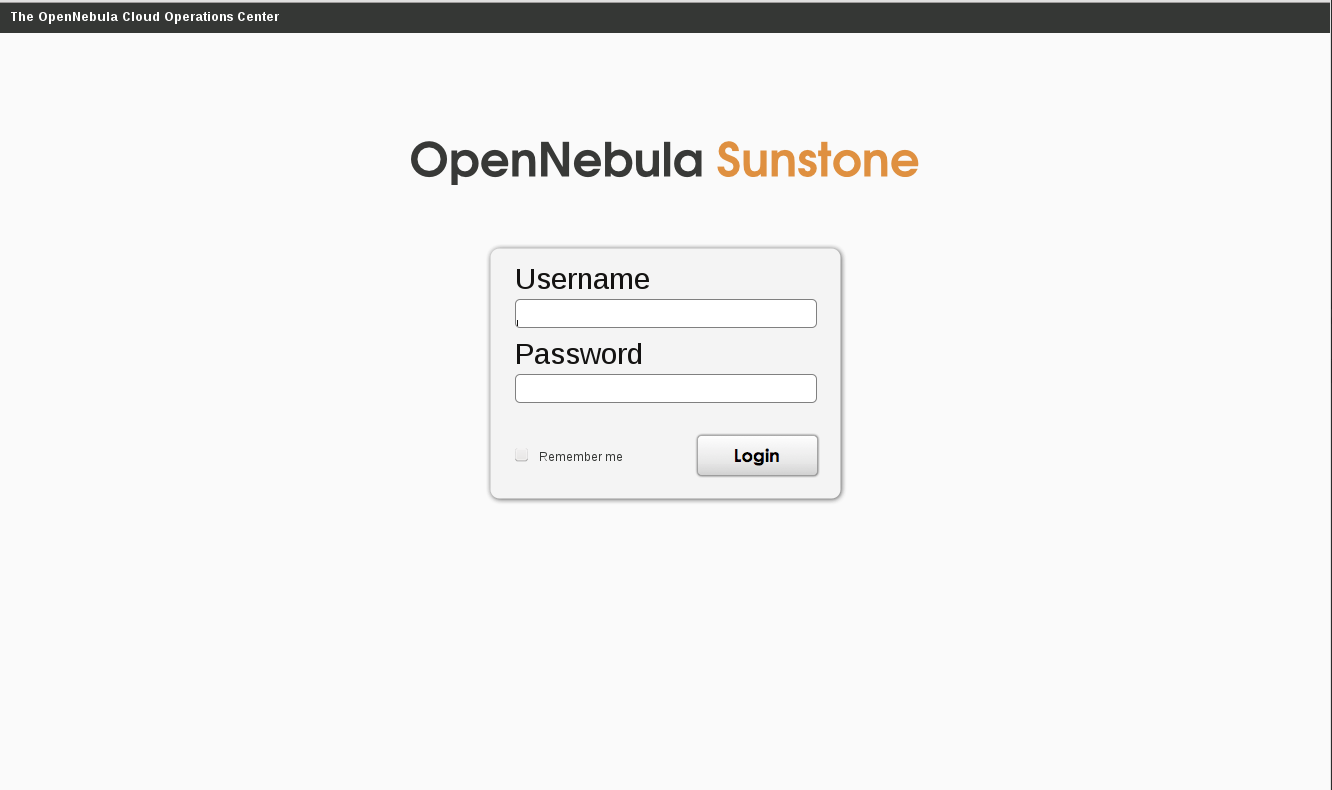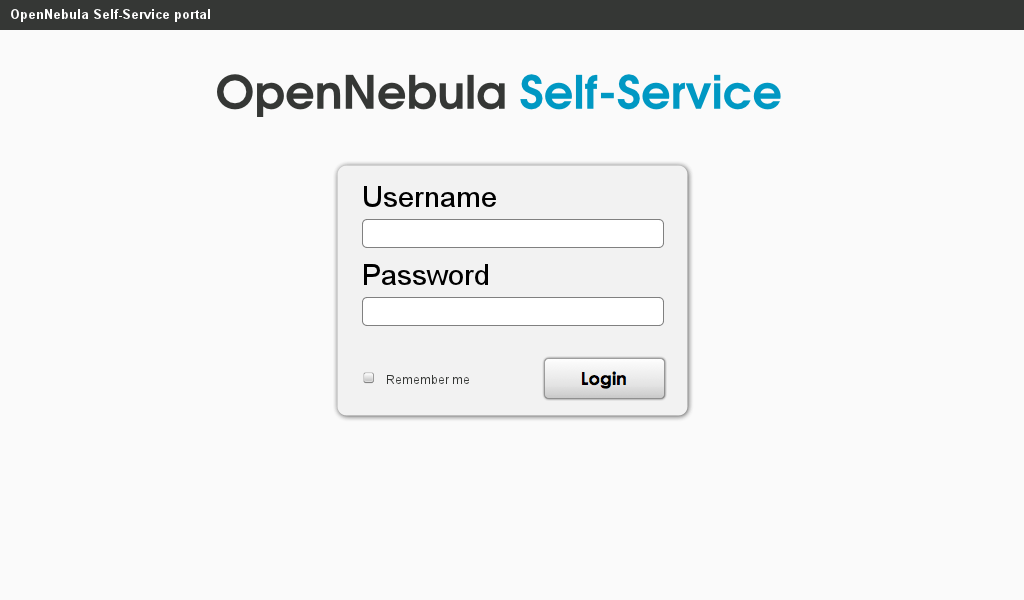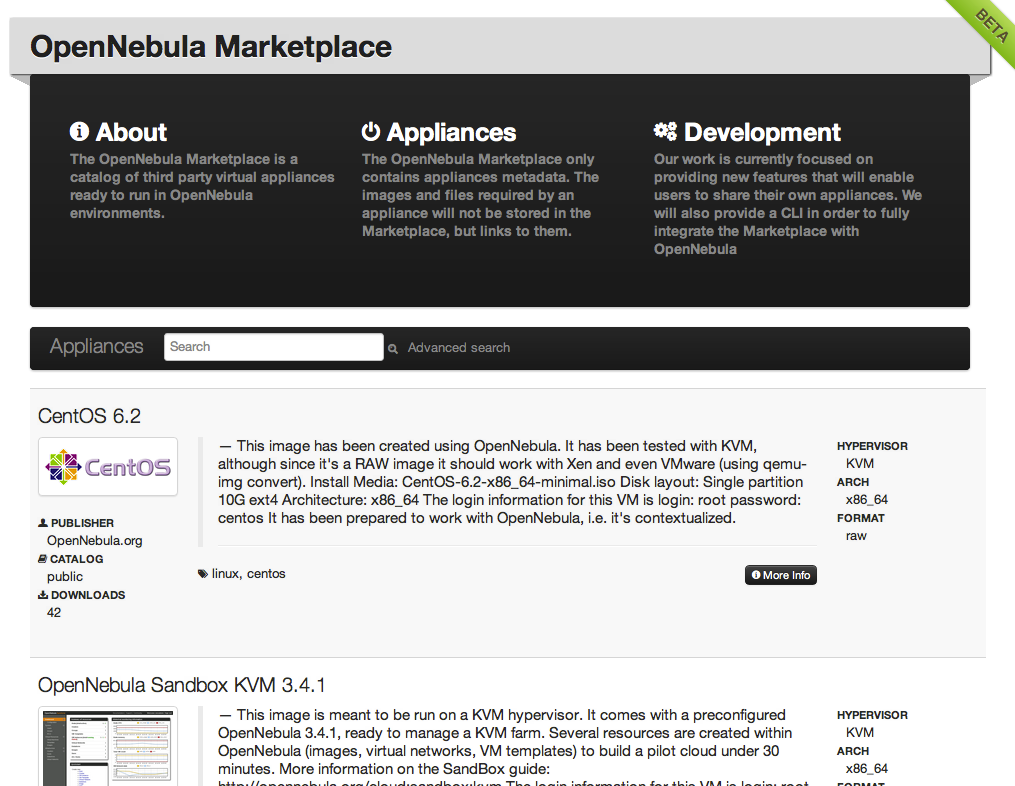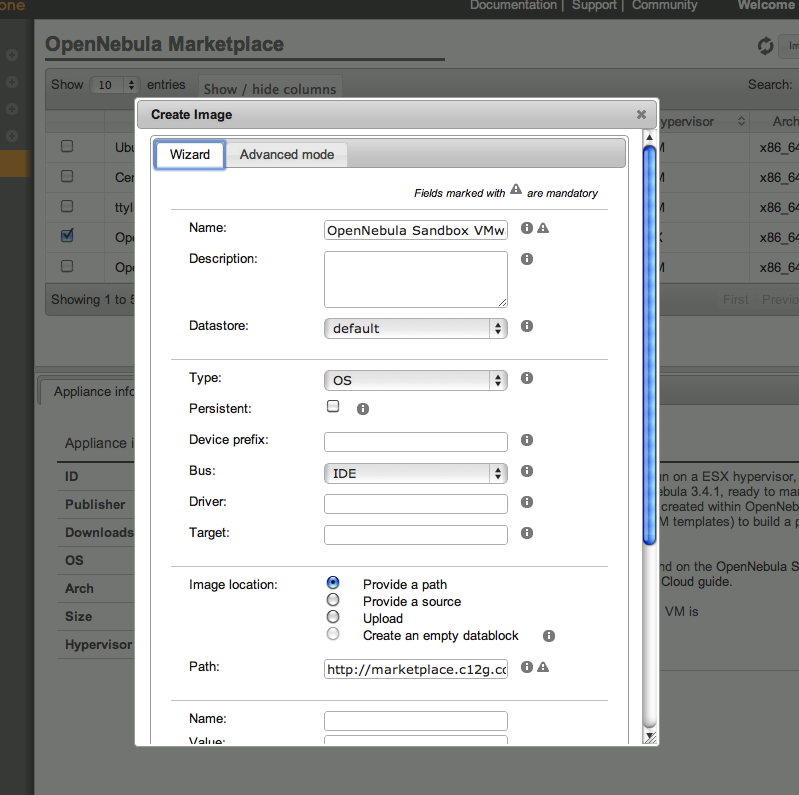Software Details:
Version: 4.0
Upload Date: 20 Feb 15
Developer: OpenNebula Project
Distribution Type: Freeware
Downloads: 149
OpenNebula is an open source software that tries to become the number one solution for managing and building IaaS clouds and virtualized enterprise data centers.
OpenNebula aim is to be the most-advanced, adaptable and highly-scalable, industry standard solution for enterprise-class cloud data center management.
What is new in this release:
- The OpenNebula project is proud to announce the immediate availability of OpenNebula 4.0 Eagle. The project has come a long way since the first "technology preview" of OpenNebula five years ago. During these years we've witnessed the rise and hype of the Cloud, the birth and decline of several virtualization technologies, but specially the encouraging and exciting growth of OpenNebula; both as a technology and as an active and engaged community.
- OpenNebula 4.0 is the result of the terrific feedback of the day-to-day operation of virtualized infrastructures by many of you, result of all your contributions, bug reports, patches, and translations, but one and foremost, OpenNebula 4.0 is the realization of a vision of simplicity, openness, code-correctness and a sysadmin-centric approach. This defines our personality as a community, it defines the OpenNebula Way. Now the features that you've been waiting for....
- OpenNebula 4.0 includes new features in most of its subsystems. We are showing for the first time a completely redesigned Sunstone, with a fresh and modern look and an updated workflow for most of the dialogs. The also new Sunstone Views functionality allows to customize the GUI for each type of user or group, so the interface implements a different provisioning model for each role. A whole new set of operations for VMs like system and disk snapshoting, capacity re-sizing, programmable VM actions and IPv6 among others. There are some new drivers also, like Ceph; as well as improvements for VMware, KVM and Xen. The scheduler has received some attention from the OpenNebula team to easily define more placement policies... and much more (see below).
- This is a stable release and so a recommended update that incorporates several bug fixes since 4.0 Beta and 4.0 RC. Although this is a major release we've done our best to keep compatibility with OpenNebula 3.8 so any application developed for previous versions should work without effort. We have changed the name of some of the operations over the VM (we have now 32 different management actions) so be sure to check the compatibility and upgrade guides.
- As enterprise-ready product, each OpenNebula Series is maintained for three years, in few days we will release the first Service Pack for the OpenNebula 3 Series.
- As usual OpenNebula releases are named after a Nebula. The Eagle Nebula (catalogued as Messier 16 or M16, and as NGC 6611, and also known as the Star Queen Nebula) is a young open cluster of stars in the constellation Serpens, discovered by Jean-Philippe de Cheseaux in 1745-46. It is located about 7,000 light-years away from Earth.
What is new in version 3.8:
- OpenNebula Core:
- This release includes the following changes in OpenNebula core:
- Improved VM life-cycle, some VM transitions has been tuned to prevent from loosing VM states when a infrastructure related failure occurs. Now when a suspended/stopped/unknown VM fails to restart/resume it returns to its original state instead to retry the operation o manually delete the VM.
- Enhanced VMware support through a new set of Datastore and Transfer Manager drivers. These new drivers enable the implementation of multiple storage solutions and brings native support for VMFS.
- Support for cgroups on KVM. The kernel cgroups facility is used to enforce VM CPU usage as described in the VM Template.
- Support for SPICE on KVM. Users may take advantage of the SPICE protocol to define access to the VMs.
- Virtual Routers. There is a new ready to use network appliance that implements a virtual router. This Virtual Router is fully integrated with OpenNebula and uses the information defined in the Virtual Network template to provide basic L3 services like NATting, DHCP, DNS...
- Poweroff. A VM in poweroff state is similar to suspended, but without a checkpoint file, so it can be restarted to immediately boot it in the same Host. There is also a new poweroff action associated to this new state.
- Pre and post migration driver actions. The new actions allow to easily integrate new storage backends. Usually customs actions must be performed before and after a live-migration, this new driver actions can be used to implement them.
- Minor CLI improvements and template-less creation. The command line tools have undergone several minor changes and features a new set of options to create VMs and images in a single line.
- Datastore location per cluster. Heterogeneous clouds with different hypervisors may simplify its deployment by setting the datastore location on the hosts per each cluster, instead of doing it globally as in previous versions.
- More variables in CONTEXT. User related data (user name, group id and name) can now be used directly, without the need to include and parse the whole user template.
- More robust resubmit. Clean up operations are now synchronized with the VM transitions, making the resubmit operation safer and more robust.
- EC2 Query Server:
- The EC2 Query API has been greatly improved in Twin-Jet, including:
- Implementation of the EBS interface. Create, attach and detach volumes to EC2 instances
- Implementation of the keypair interface. Keypairs are stored in the user template in the OpenNebula DB, and injected in the VM instances through the contextualization process.
- Although EC2 Query API server can be interfaced with any of the EC2 tools, the OpenNebula econe client tools have been also improved and extended.
- OCCI Server:
- The OCCI API has been improved in Twin-Jet, including:
- Implementation of new actions and hot plugging functionality
- Sunstone & Self Service Portals:
- There are several new features in the GUI applications:
- Improved VNC proxy system that reduces the number of opened ports
- Plot of user consumption can now be set for specific time-frames
- Support for Internet Explorer
- Custom routes can be added to the Sunstone server to ease the integration with third party tools





Comments not found